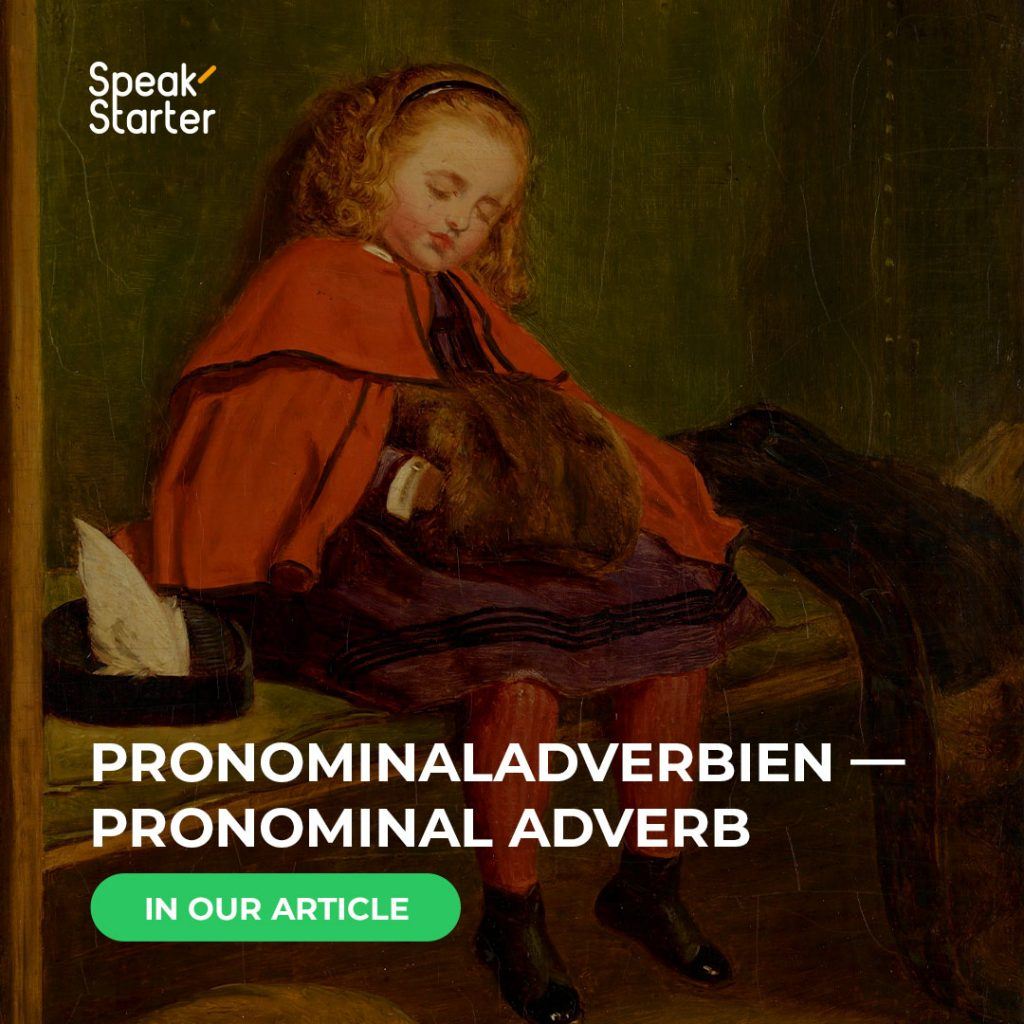Do you know how to create pronouns as we do? Even the title of the topic itself is intimidating. Actually, it’s simple.
Today we understand what the Germans call Pronominaladverbien and Präpositionalpronomen. It is a construction which, in one word, expresses the construction “pretext + adverb” (Pronominaladverbien) or “pretext + pronoun” (Präpositionalpronomen). Okay, it still sounds rather confusing, let’s move on to examples:
Vocabularies for time and meta:
Er ist vor meinem Haus, daneben (= neben meinem Haus) steht mein Auto – it is in front of my house, my car is standing there (next to my house).
This is done, as you have already understood, in order to save time and to avoid tautology (repeating the same word several times in one sentence). All you have to do is add “da”.
Here is an example with an adverb for time transmission:
Geh jetzt in die Schule, danach (= nach der Schule) gehen wir ins Theater – go to school first, then we go to theater.
These pronouns occupy the first position in the sentence, therefore the verb goes immediately after them.
This construction is also used for pronouns for things in the case of words that require an excuse after them:
Hast du Interesse für die Geldanlage? – ja, ich habe ein großes Interesse dafür! – Do you have an interest in investing? – Yes, I have a great interest in it!
But only for things, you can’t do that with people:
Triffst du mit ihm? – ja, mit ihm (not “damit” in any way) – are you dating him? – Yes, I’m seeing him.
This design is also often required to connect the main sentence to the epididymis:
Ich warte darauf, dass du nicht spät kommst – I expect you to come not too late.
Why does the letter “r” in the middle appear in “darauf”? So that two vowels do not stand together, they are always separated by the letter “r”: “daran”, “darum”.
In order to skillfully operate with such grammatical techniques, you need to know prepositions and understand what prepositions different verbs require after themselves. We have a separate material on this subject, “prepositions”, “verbs with prepositions”.
And don’t forget that the same way questions with prepositions are constructed, only we use “wo?” instead of “da”: “Worauf warten Sie?” – “Ich warte auf dem Bus” – “what are you waiting for?” – “I’m waiting for a bus.”
We also have a separate story about that.

